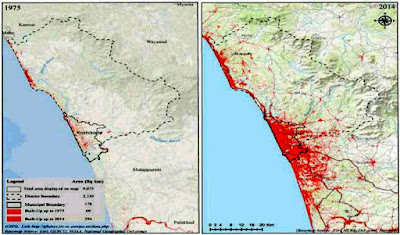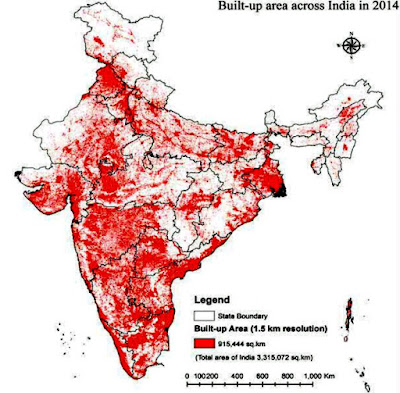Seeking to give a controversial answer to the tangled question being debated especially by India’s urban development experts as to how urbanized India is, the Government of India’s midterm Economic Survey, released last week, has questioned the Census of India data that just 31.2% of the country is urbanized.

Even as providing several urbanization criteria existing across the world, the top report, which has been prepared under the guidance of chief economic adviser Arvind Subramanian, appears to favour the urbanization definition based on the use of satellite data based of the Global Human Settlements Layer (GHSL) of the Group on Earth Observations at the European Commission.
Using this data, the report says, “India was 63% ‘urban’ in 2015 — more than double the urbanization rate estimated by the 2011 Census”, adding, based on this, there is a need to “go into a much greater level of spatial detail… to uncover important insights for promulgating expeditious public policy at centre, state and urban local body level.”
 |
| Urbanization is States under different criteria |
The GHSL data looks at “high density clusters” for analyzing urbanization, supported by three important criteria: (a) 4 contiguous cells with at least 1,500 persons per square kilometer, (b) minimum of 50,000 persons per cluster, and (c) density of built-up area greater than 50%.
“The GHSL data is processed fully automatically and generates analytics and knowledge reporting objectively and systematically about the presence of population and built-up infrastructures”, the report states, adding, “The approach is still experimental and we hope to refine it and apply it in many new fields and geographies.”
Pointing out that “India is rapidly urbanizing”, the report asks, “But does the 2011 census based urbanisation rate of 31.2% fairly capture it?”
It says, urbanisation in India is officially defined by two metrics, administrative and census. Under administrative only the population living in areas governed by urban local bodies are covered. Under census, the criteria include population of at least 5,000, density of at least 400 persons per square kilometre, and at least 75% of the male main working population engaged in non-agricultural activities.
Using the administrative definition, India was approximately 26% urban in 2011, while under the census definition, it was 31.2%. Pointing towards the discrepancy, the report says, “Kerala is 15% urban by the administrative definition, but 47.7% by the census definition.”
Noting different definitions adopted across the world to identify urban population, the report says, “In countries like Ghana and Qatar, all settlements with 5000+ population are deemed urban. India would be 47% urban in 2011 by this definition. In Mexico and Venezuela, a 2500+ threshold is employed. India would be 65% urban in 2011 by this definition. Kerala is 99% urban both by the 5000+ and 2500+ population definitions.”
It further notes, “A 2016 World Bank report (click HERE) uses an agglomeration index to measure urbanisation and finds that more than half the population in India is urban. Research by Jana, Sami, and Seddon finds that if we relax the population size and occupation categories and only use the density criteria of 400 persons per square kilometer, India is around 78% urban.”
“It finds that even if we use density criteria of 800 persons per square kilometre, India will still be more urban (55%); far more than the current official numbers suggest. The point is that different definitions give very different answers and the appropriateness of a particular framework really depends on the application”, the report says.
 |
| Urbanization in Kozhikode, Kerala |
Insisting that “urbanization is not black-and-white as there are many shades of semi-urban settlements”, the report underlines the need for recognizing that “cities are regarded as ‘engines of growth’ for economies”, and it is the confluence of capital, people and space in cities which “unleashes the benefits of agglomeration, creating a fertile environment for innovation of ideas, technologies and processes which produce huge economic returns.”
Additionally, the report says, “Cities in India generate two-thirds of national GDP, 90 per cent of tax revenues and the majority of formal sector jobs, with just a third of the country’s population”, one reason why the Government of India has sought “a major policy response” through the Smart City Mission.
Courtesy: Counterview.net

